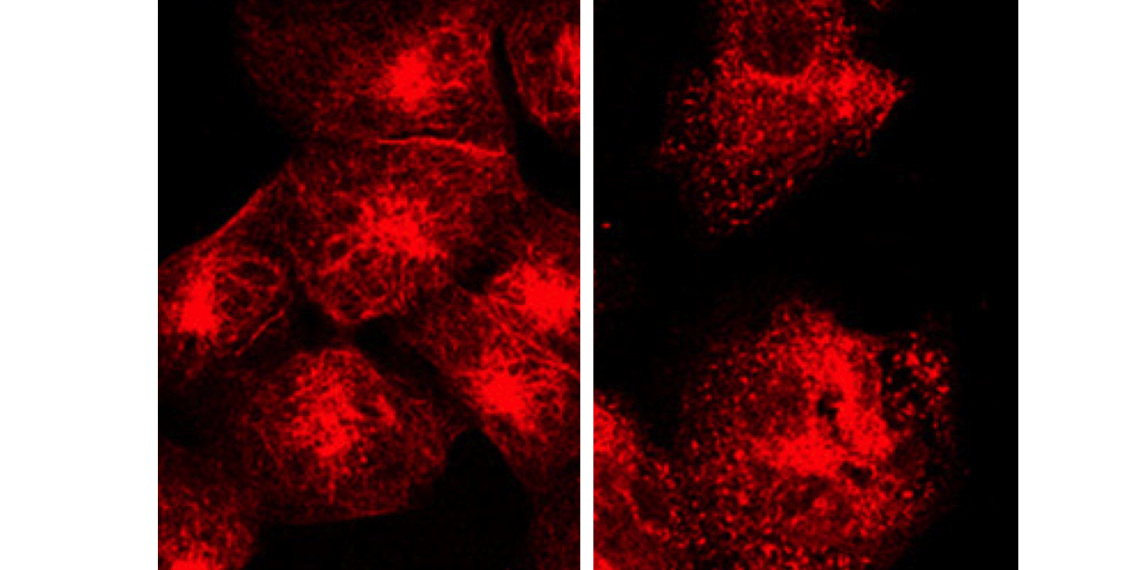The activity of our genes is controlled by the proteins “transcription factors”. These proteins can therefore lead to diseases, for example the development of cancer, if they function incorrectly. One of these proteins called “MYB” plays a significant role in acute myeloid leukemia (AML) and possibly other leukemias. AML is one of the most common leukemias with a poor prognosis, especially in older patients. A research team at Westfälische Wilhelms-Universität Münster has now gained new insights into the MYB protein and its inhibition as a possible therapeutic target as part of a research project funded by the Wilhelm Sander Foundation.
The understanding of the causes of cancer has grown dramatically in recent years. New genes and proteins responsible for the development of tumors have been identified and biological relationships characterized. However, the transformation of these findings into practical therapies for the treatment of these diseases is often a lengthy process.
The research group led by Prof. Dr. Karl-Heinz Klempnauer at the Institute of Biochemistry at the Westfälische Wilhelms-Universität Münster (WWU) has been working on the MYB protein for many years. Klempnauer had already come across this protein in 1984 as a postdoctoral researcher in the laboratory of Nobel Prize winner Michael Bishop at the University of California in San Francisco (UCSF), USA, and has since investigated many aspects of its function. Among other things, he and his research team have discovered a link between acute myeloid leukemia (AML) and overactivity of the transcription factor MYB and have therefore targeted inhibition of the MYB protein as a potential therapeutic strategy for AML.
Some time ago, for example, scientists* led by Karl-Heinz Klempnauer succeeded in showing for the first time that certain small-molecule substances are able to inhibit the activity of MYB by impeding its interaction with a so-called co-activator. Co-activators are proteins that enhance the regulatory effect of transcription factors on their target genes. Inhibiting the interaction between MYB and its co-activator leads to blocking the proliferation of AML cells. The research group was thus able to demonstrate for the first time that inhibition of MYB activity by an inhibitor blocks the proliferation of AML cells. In a mouse model of AML, this led to significantly longer survival of the animals after application of such an inhibitor, compared to the animals in the untreated control group.
The goal of the research team was now to identify further and more effective MYB inhibitors as part of the project funded by the Wilhelm Sander Foundation. First, Klempnauer and colleagues were able to show that so-called histone deacetylase (HDAC) inhibitors, chemical compounds already used for the therapy of certain types of cancer, are also very effective MYB inhibitors [1]. HDACs are enzymes that, among other things, chemically modify histones — these are important proteins responsible for “packaging” DNA in the cell nucleus. They thus directly regulate gene expression, i.e. the transcription of genetic information, and are also involved in other processes, such as the control of the cell cycle and the development of the organism.
On the other hand, the research group, together with cooperation partners, has found another previously unknown compound that inhibits the activity of the MYB protein similarly effectively to the HDAC inhibitors. The special feature of this compound, known as “Bcr-TMP”, is that it also inhibits the function of the so-called microtubules. Microtubules form a network of dynamically assembling and disassembling, thin, thread-like cell structures (protein filaments) within the cell, which is required, among other things, for cell division. Inhibitors that destroy this network have been known for some time and have been used in cancer therapy for many years due to their ability to inhibit cell division and thus cell proliferation. The special feature of this new inhibitor — according to Klempnauer and colleagues — is that it simultaneously attacks two different processes in AML cells that are important for cell proliferation: on the one hand, the regulation of genes by the transcription factor MYB and, on the other, the process of cell division [2].

















